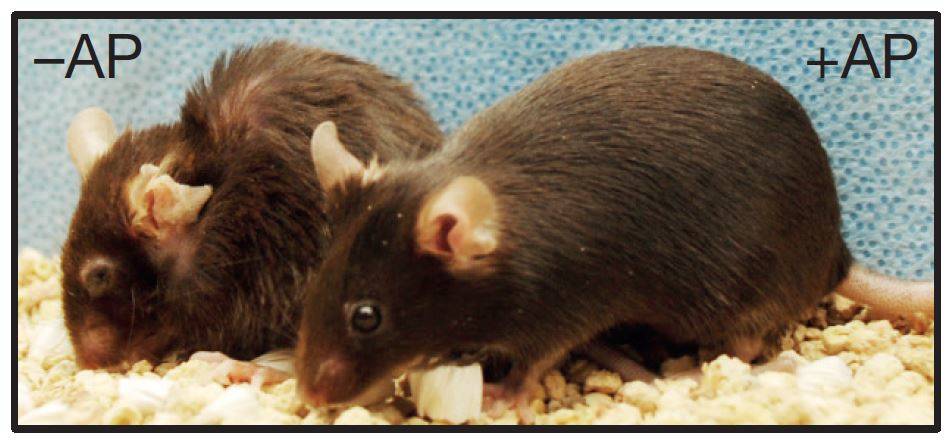Life span, health span, and the role of cell senescence
Age correlates strongly with a wide variety of adverse health outcomes, including cancer, heart disease, and cognitive decline. Although medical advances have extended our life span, preserving quality of life during these additional years remains a challenge. During senescence, cells enter an irreversibly arrested state in response to stress, and senescence can function to suppress tumors or preneoplasms. For years researchers have suspected that senescent cells play a role in aging; however, conclusive evidence has been lacking. In a February 2016 study published in Nature, Dr. Daren Baker, Dr. Jan van Deursen, and colleagues from the Mayo Clinic College of Medicine use a transgenic approach to eliminate senescent cells in mice and establish clear, causal contributions by these cells not only to life span, but also to age-related functional decline in specific organ systems (Baker et al., 2016).
A transgenic approach to eliminating senescent cells
In this new study, the Mayo researchers modified a previously published mouse model (Baker et al., 2011) to eliminate senescent cells. This earlier model, called FAT-ATTAC (fat apoptosis through targeted activation), expresses an FK506 binding protein-caspase 8 (FKBP–Casp8) fusion protein driven by a Fabp4 promoter selectively in adipocytes. Treatment with the synthetic compound AP20187, causes the fusion protein to dimerize and ablate the FKBP–Casp8-expressing cells (Pajvani et al, 2005).
Senescent cells express high levels of a biomarker called p16Ink4a. To modify the FAT-ATTAC model to selectively ablate senescent cells, the Mayo team group replaced the adipocyte-specific Fabp4 promoter with the sequence from the p16Ink4a promoter. Further, they also added an internal ribosome entry site (IRES) followed downstream by an enhanced green fluorescent protein (EGFP) cassette to label the cells expressing the FKBP–Casp8 fusion protein. The novel transgenic line, called INK-ATTAC, permits ablation of senescent cells with AP20187.
Senescent cell clearance increases longevity and improves health of some (but not all) tissue types
The investigators examined the effect of senescent cell ablation on two cohorts of INK-ATTAC mice which differed by background and AP dosing regimen. One cohort was on a mixed background that included 129Sv, C57BL/6J, and FVB. The second was backcrossed to C57BL/6J (Stock# 000664) mice to create a C57BL/6 congenic strain. Transgenic male and female mice from both cohorts were randomly assigned to receive AP20187 (AP) or vehicle starting at 12 months of age until the end of life. The mixed background cohort received 0.2 µg AP per gram of body weight from 12 – 18 months of age and 2.0 µg AP per gram of body weight thereafter. The congenic C57BL/6J cohort received 2.0 µg AP per gram of body weight from 12 months of age until end of life. Non-transgenic colony controls were used to test whether the AP treatments alone had any adverse effects, and none were observed.
AP-mediated senescent cell destruction increased median life span in a sex-independent, background-independent manner: in the mixed background, mixed sex cohort, median survival time increased by 27%; in the congenic mixed sex cohort, median survival time increased by 24%. Maximum life span was increased in mice with the mixed but not in those with the C57BL/6J congenic background. AP treatment prevented age-related reductions in activity levels in both sexes on both backgrounds at 18 months of age. As shown in the figure below, treated mice could be visibly distinguished from untreated mice by 22 months of age.

Figure. Two C57BL/6 INK-ATTAC (apoptosis through targeted activation of caspase) mice, 22 months old. The mouse on the right was treated with AP20187 and looks younger and healthier due to targeted elimination of p16Ink4a-positive senescent cells than the untreated mouse on the left. (Adapted from Baker et al., 2016.)
Organ systems were variably affected by senescent cell ablation. Expression of Ink4a, FKBP-Casp8, GFP and other senescence markers were measured in AP-treated mice in a wide variety of tissues at 2-, 12-, and 18- months of age to assess senescent cell clearance rates. AP treatment reduced expression of these transcripts in skeletal muscle, eye, kidney, lung, heart, and spleen, but not colon or liver. Why senescent marker transcripts were not reduced in all tissues is unclear. The different tissue responses to AP treatment may reflect tissue-specific roles for senescent cells or a limitation of the model system. Removal of senescent cells delayed the onset of tumors in treated animals, but did not change the overall incidence or the variety of tumor types observed. Cataract formation in both sexes was delayed on the C57BL/6J but not in mice on the mixed background. AP treatment also reduced age-related adipose loss, reduced renal glomerulosclerosis and kidney function decline, and preserved cardiac stress tolerance in all treatment groups. Removal of p16Ink4a+ cells had no effect on age-related changes in motor coordination, memory, or muscle strength.
Summary
The molecular basis of aging remains poorly understood, and although advanced age is not a disease per se, it is the major risk factor for many chronic disease states. The results of this study raise intriguing questions about the role of senescent cells in age-related changes in different organ systems. More importantly, the data provide proof-of-concept evidence to support future investigations into therapeutic targeting of senescent cells for improved management of age-related functional decline.